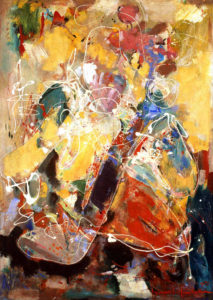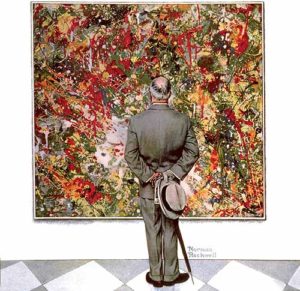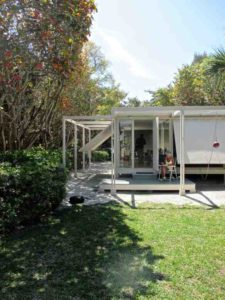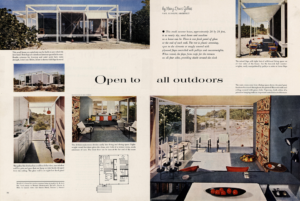 “In a courtroom everything becomes quite different from what it is. I’ve always greatly admired, for example, the sheer intellectual achievement of a good summing-up. But it comes to my mind now I’ve heard litigants say, when you know what really happened it sounds like the ravings of delirium. You lawyers are not appreciated: you’re the great creative artists of the age!”
“In a courtroom everything becomes quite different from what it is. I’ve always greatly admired, for example, the sheer intellectual achievement of a good summing-up. But it comes to my mind now I’ve heard litigants say, when you know what really happened it sounds like the ravings of delirium. You lawyers are not appreciated: you’re the great creative artists of the age!”
Honor Tracy, The Straight and Narrow Path

 • Show up on Saturday, then “look slowly—5-10 minutes—at each piece of pre-assigned art.”
• Show up on Saturday, then “look slowly—5-10 minutes—at each piece of pre-assigned art.” I am, I blush to admit, a bit of a galloper when it comes to museumgoing, just as I habitually eat too fast. On the other hand, I also collect art, and I’ve learned from doing so that the more time you spend looking at a painting of quality, the more fully it reveals its secrets, in much the same way that you come to understand a novel more completely by re-reading it. This is true of all important art, regardless of medium…
I am, I blush to admit, a bit of a galloper when it comes to museumgoing, just as I habitually eat too fast. On the other hand, I also collect art, and I’ve learned from doing so that the more time you spend looking at a painting of quality, the more fully it reveals its secrets, in much the same way that you come to understand a novel more completely by re-reading it. This is true of all important art, regardless of medium… In Saturday’s Wall Street Journal “Masterpiece” column I wrote about Paul Rudolph’s Walker Guest House, located on Florida’s Sanibel Island, and the
In Saturday’s Wall Street Journal “Masterpiece” column I wrote about Paul Rudolph’s Walker Guest House, located on Florida’s Sanibel Island, and the  Today Rudolph, who died in 1997, is best remembered for his public buildings in the now-unfashionable “brutalist” style, many of which have either been torn down or are earmarked for demolition. But it was his Florida vacation homes that put him on the map, so much so that the Walker Guest House was the subject of an enthusiastic 1954 two-page spread in McCall’s (“This small summer house…is as nearly sky, sand dunes and sunshine as a house can be”). Their continuing fame is well deserved. Like Frank Lloyd Wright’s 880-square-foot Seth Peterson Cottage, another miniature masterpiece and the smallest of the “Usonian” houses that Wright designed for middle-class homeowners, the Walker Guest House is so compact and logically organized that to step inside feels almost as though you’re putting on a piece of clothing….
Today Rudolph, who died in 1997, is best remembered for his public buildings in the now-unfashionable “brutalist” style, many of which have either been torn down or are earmarked for demolition. But it was his Florida vacation homes that put him on the map, so much so that the Walker Guest House was the subject of an enthusiastic 1954 two-page spread in McCall’s (“This small summer house…is as nearly sky, sand dunes and sunshine as a house can be”). Their continuing fame is well deserved. Like Frank Lloyd Wright’s 880-square-foot Seth Peterson Cottage, another miniature masterpiece and the smallest of the “Usonian” houses that Wright designed for middle-class homeowners, the Walker Guest House is so compact and logically organized that to step inside feels almost as though you’re putting on a piece of clothing….